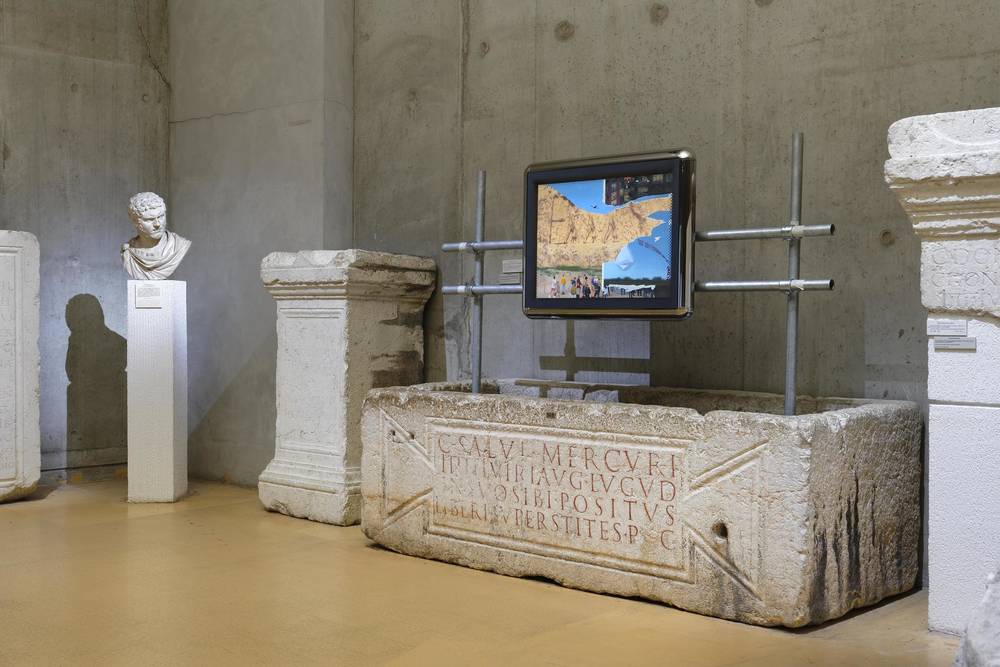This year’s Lyon Biennale brings together over 2,000 years of history under the title “Manifesto of Fragility”. The historical objects, places, and narratives provide an intriguing backdrop for the works of contemporary art.
Back in the days when it was an international center of silk weaving, Lyon was a prosperous metropolis. Today, the city hosts France’s most important exhibition series, the Lyon Biennale. The 16th edition of the festival, curated by Sam Bardaouil and Till Fellrath, explicitly references the city’s history to skillfully forge a dialogue with the present. Attention is, for example, drawn to the “canuts” (French for silk weavers), without this being over-emphasized. After all, in the mid-19th century, these textile workers led the first major social uprisings in France and thus sought to ensure working class interests were championed.
Nostalgia alongside a new beginning with Annika Kahrs
Among the approximately 200 participating artists, Annika Kahrs refers to precisely this aspect of local history. Her video work “Le Chant des Maisons” (2022) occupies the monumental hall of a modern industrial site which serves as the main Biennale venue. The Fagor factory produced household appliances and later cars in the 1980s until it closed down in 2015. For her part, the artist shot the film at another historical site in the city, namely the deconsecrated Saint Bernard Church. A choir, a brass band, and an organist enliven the Gothic architecture as they perform music in front of the altar. Among others, they play the hymn “Le Chant des Canuts” (1894) as a direct reference to the revolts of that time, and a group of tradesmen also take the stage. They use wooden pallets to build the basic framework of a simple hut in the house of worship – a house within a house, nostalgia alongside a new beginning. In a successful way, this contribution to the Biennale corresponds with the industrial cathedral in which it is presented, preaching as it does so the strength of community.
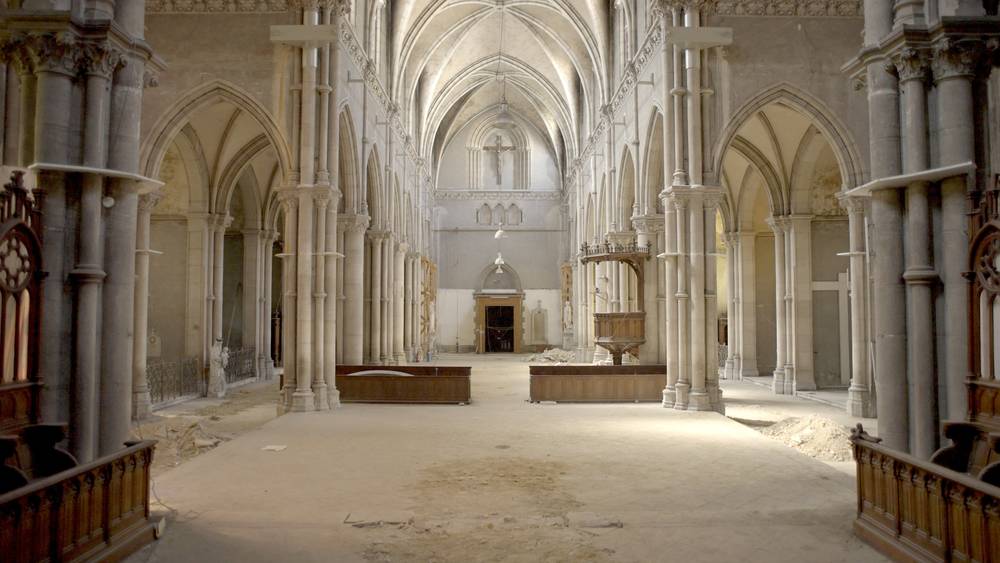
The unexplored biography of Louise Brunet
In contrast, at macLYON, the Museum of Contemporary Art, a figure is brought back to life who has not yet been given a place in the history books: Louise Brunet. Her unexplored biography is used by the curators to draw attention to the fragility of life and to forms of resistance – the central themes of the show. Brunet was a textile factory worker who fought the brutal regime for better workers’ rights. Weary of vain rebellion and driven by the hope of a better life, she moved to Lebanon, where the silk industry was thriving. As letters attest, however, she faced similarly cruel oppression by those in power there. No one knows what ultimately happened to her, and so this part of the exhibition uses historical artifacts and contemporary art to imagine possible scenarios of moments of emancipation.
The painter Jesse Mockrin, for example, copies fragments from paintings of European art history, thereby calling for new perspectives on the past. Her oil paintings not only point to the incompleteness of our historiography, but also question power relations in binary worldviews. Meanwhile, in his video “Prelude to an Announced Death” (1991), Rafael França shows the tender affection of homosexual men in the midst of the AIDS epidemic, which also cost him his life. This was his last artistic work – a farewell piece that hauntingly wards off oblivion. With the selection of works, the curators have bravely attempted a balancing act between the presentation of strong artistic positions and speculation about the young revolutionary that Brunet was. One thing is certain: After this Biennale, Louise Brunet will be lodged in the collective memory of les lyonnais for good.
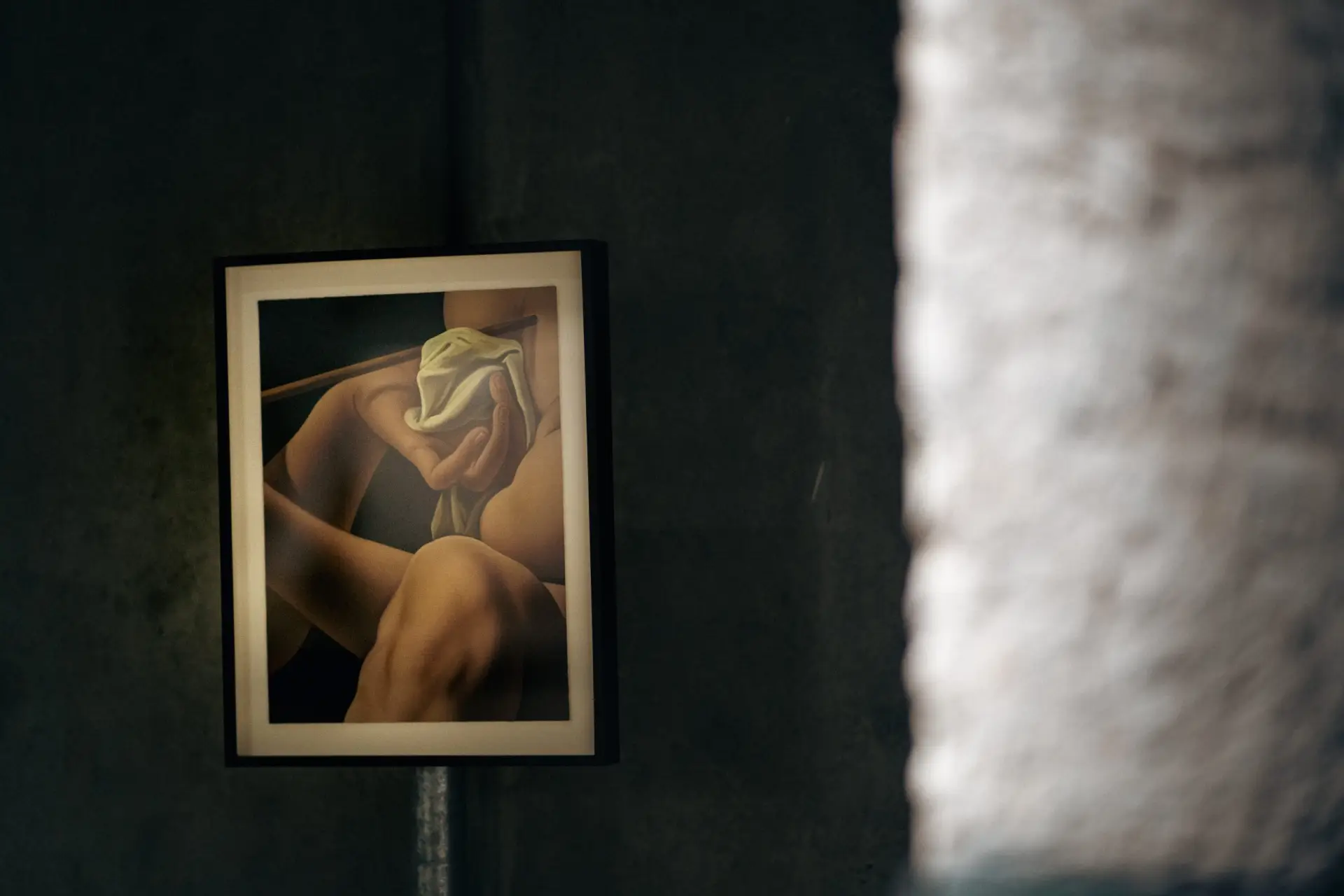
Jesse Mockrin, Wound, 2022, Laurent and Corinne Opman Collection, Image via labiennaledelyon.com
Beirut and the “Golden Sixties”
With Brunet’s move to Lebanon, the German-Lebanese curator duo also forges a mental link to Beirut. In a separate exhibition section, the focus is on the Mediterranean city in its heyday during the “Golden Sixties”, and the rich collection of archive documents and artworks includes well-known names such as Etel Adnan and Simone Fattal. In their works the two female artists put up their own form of resistance to the civil war from 1975 to 1990, while Joana Hadjithomas and Khalil Joreige draw attention to recent events. The duo confronts visitors with original footage from August 4, 2020, the day of the devastating explosion in the port of the Lebanese capital, an event that triggered shock and mass protests.
While these two thematic chapters present all the artworks woven precisely into the curatorial concept, in other sections the exhibits stand more on their own. This time, there are a total of 12 sites spread throughout the city, and one that is particularly worth visiting is the Musée Guimet, a museum building built in 1879 but vacant for years and therefore in disrepair. The dystopian atmosphere combines impressively with Evita Vasiljeva’s walk-through light-and-sound installation. As the audience enters a disused archive room, poison-green neon tubes flicker on against a background of electric noise. The choreography repeatedly eludes the control of the intruding visitors and leaves behind an oppressive physical sensation.
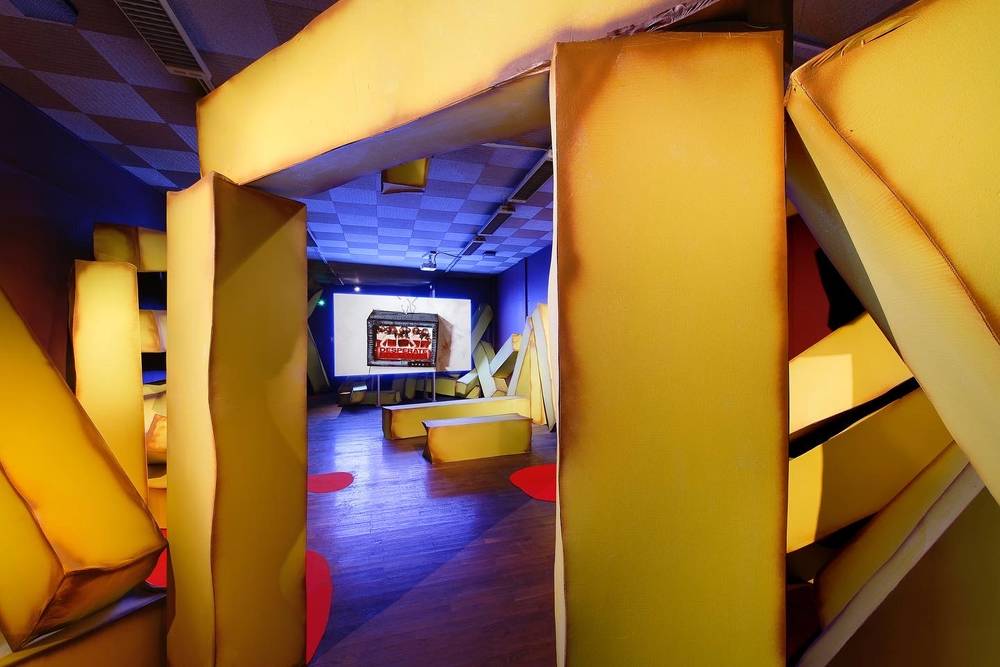
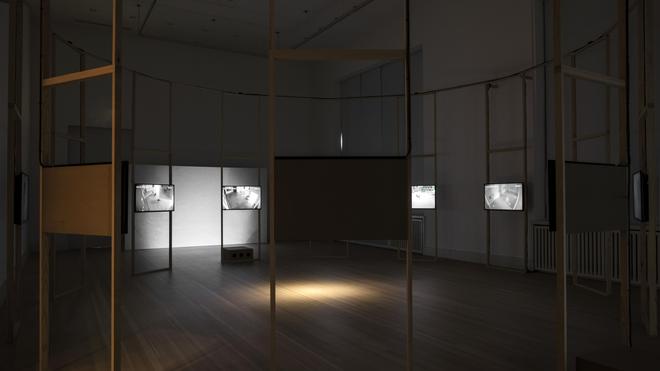
Installation view: Joana Hadjithomas and Khalil Joreige, As night comes when day is gone, © Luca Girardini, Image via zeit.de

Evita Vasiljeva, Impulse (J or Imp), 2020-2022, Courtesy the artist, Image via labiennaledelyon.com
Between disguise and drag, fact and fiction
Puck Verkade likewise creates an uneasy and surreal atmosphere, but in doing so plays with themes of the absurd. Her video work “Plague” (2019) runs in an endless loop and makes use of analog film techniques such as stop-motion animation, as well as handmade costumes and props. The latter sometimes protrude out into the space as if in an installation, with outsized cardboard French fries, for example, dipping into a ketchup-like carpet on the floor. In the film, by contrast, they provide scavenged food for a scolding housefly who interacting with an exasperated housewife fantasizes about the extinction of humankind. Somewhere between disguise and drag, fact and fiction, Verkade comments on a psychological as well as ecological breakdown. In doing so, she refers to the sense of loss known as solastalgia, which results from the destruction of one’s own living environment, and humorously urges prudence.
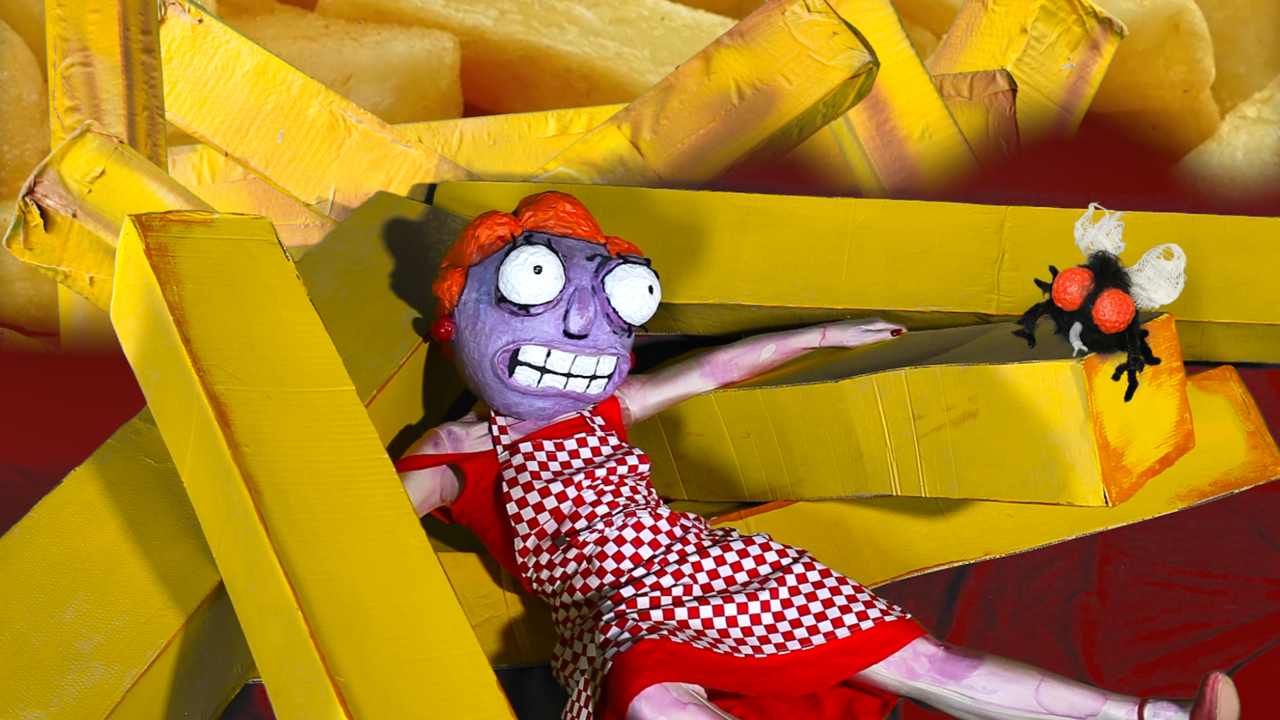
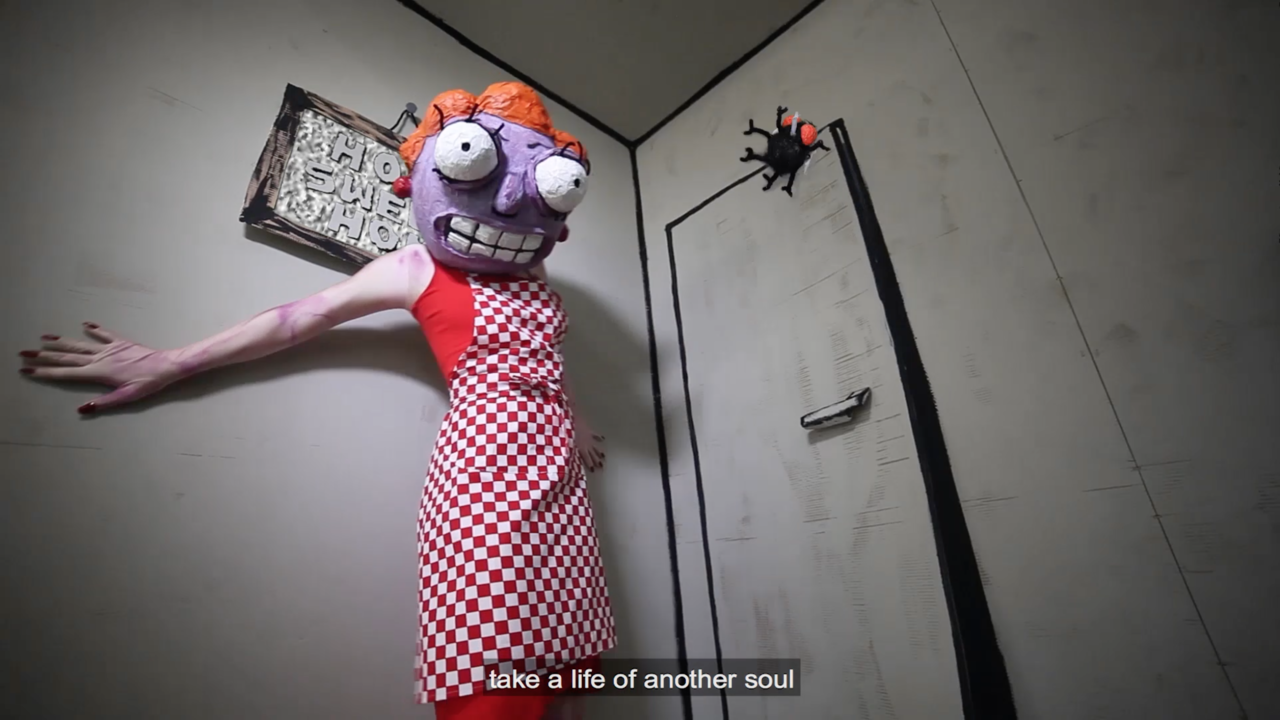
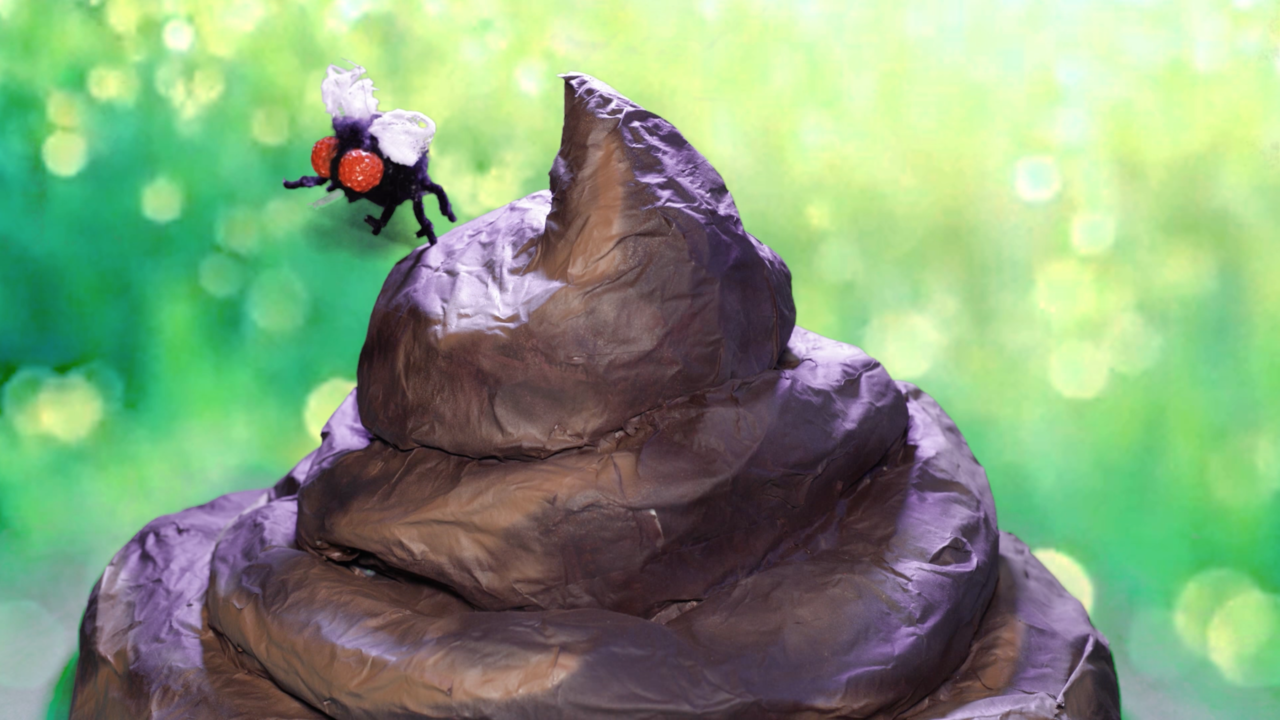
A platform for emerging positions
This is the first Biennale appearance not only for Verkade. The major exhibition offers an international platform for many up-and-coming positions, such as kennedy+swan, who are showing a multi-part 3D film based on AI. Or Jean Claracq, whose painting installations can be seen at the Museum Lugdunum (the Latin name for “Lyon”). In three new productions, the artist engages with the archaeological collection by combining individual objects with elements of our present. Young men with smartphones, gleaming cars, and urban opinions make an appearance in a painting style inspired by the works of the Renaissance. For the barely penetrable density of references, Claracq drew inspiration from analog advertising billboards in the Paris Métro, where torn posters reveal glimpses of the past – and seemingly divergent thematic layers similarly overlap in his paintings. “Tout doit disparaître” (“Everything must go”) is written on a work with the very same title. The sentence reads on the one hand as a familiar slogan from the capitalist concept of the clearance sale, and on the other as a critique of historical amnesia.
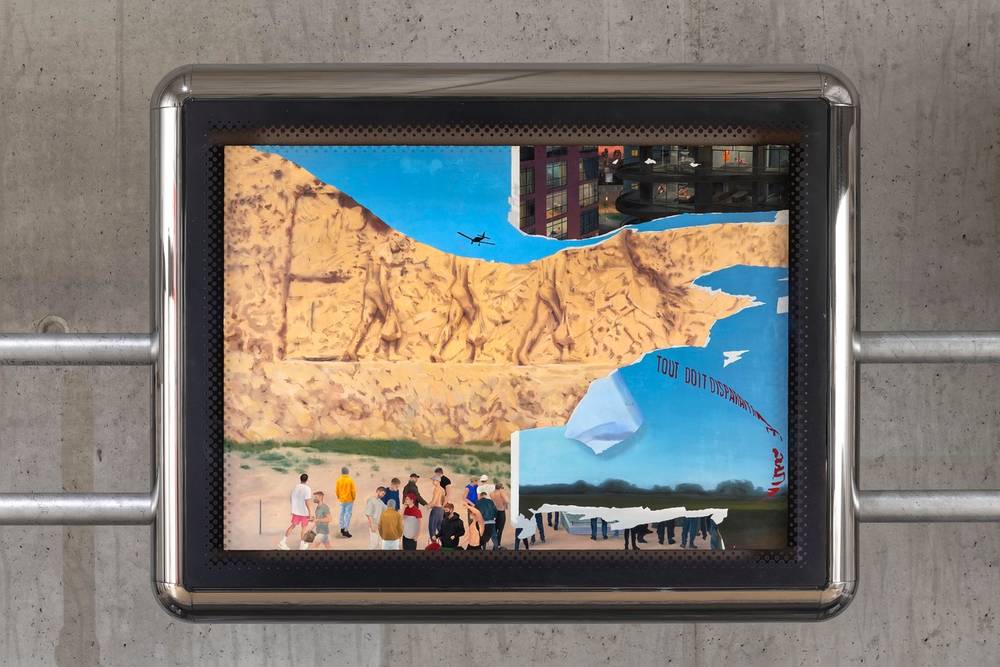
While Claracq integrates museum objects, historical collection items are also to be discerned at other venues. Between the expansive installations in the Fagor factory halls, for example, ancient sculptures from the Musée des Moulages look out over the here-and-now. What must they think when they see Klára Hosnedlová’s futuristic stone landscape, where her meticulously woven silk paintings hang from artificial stalagmites? Or the deconstructed living spaces by Pedro Gómez-Egaña, which are regularly transformed by performers?
Remaining questions
Questions like these could just as easily have been asked by James Webb, whose sound work is spread across several areas of the Biennale. The same voice can always be heard, posing interested questions of Lyon’s legacy. “What can’t you offer your audience?”, it asks a museum, for example. A silent pause is followed by nothing more than the next question: “How can we make your spaces part of the life of every person in this city?”
This very consideration seems to have been of central importance for the makers of the 16th Lyon Biennale. The result, after all, above all else promises one thing: accessibility. The exhibition makes history comprehensible without lecturing, hectoring, or disregarding topicality, although it would not have hurt of the curators had given greater depth and clarity to the titular “Manifesto of Fragility”. Fragility and vulnerability are conceived by the curators as a global model of existence. All life is characterized by fragility – so the undertone. If we recognize this, we can use our own fragility as a kind of tool for resistance – so the appeal. Yet this idea remains somewhat superficial here. Declared as an apparent manifesto, the Biennale – à la James Webb – thus also leaves some questions unasnwered.
